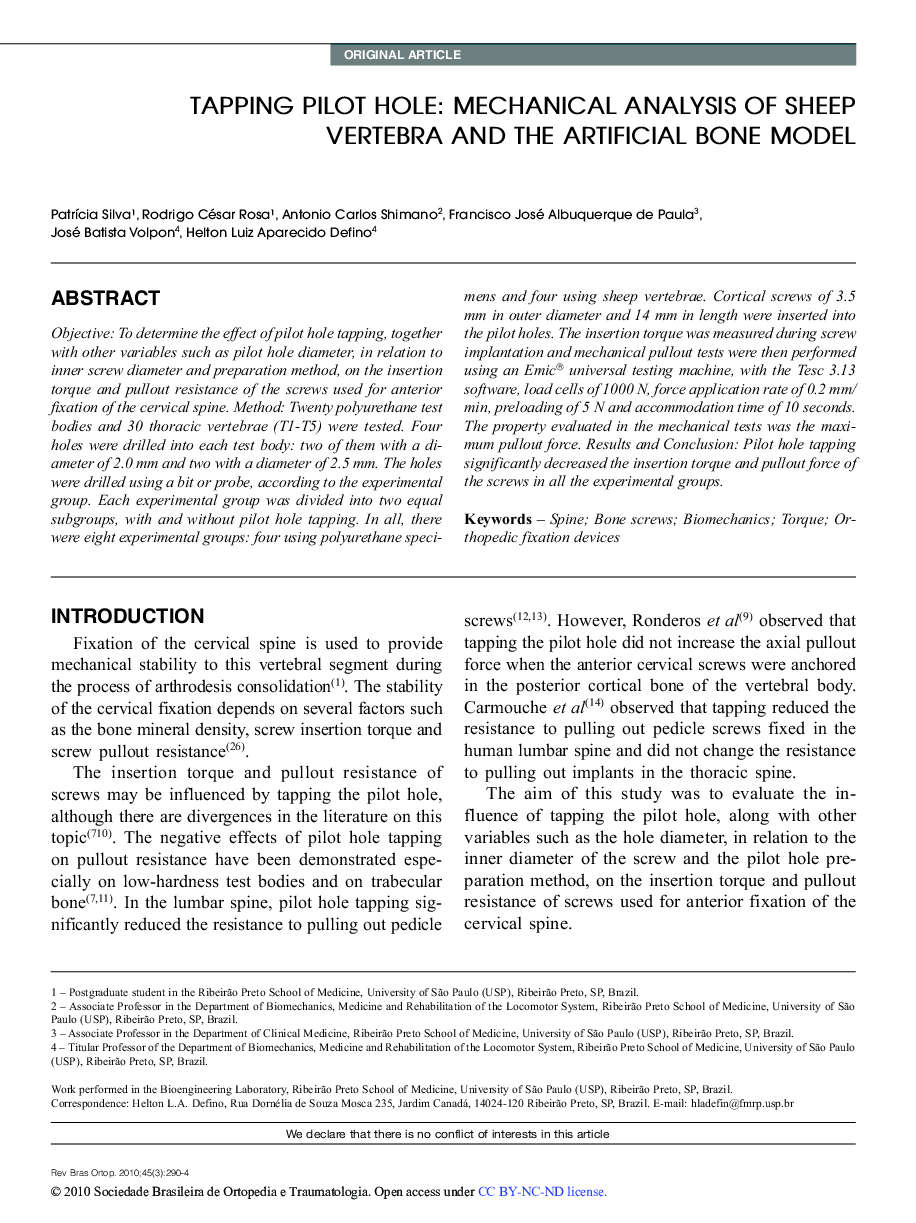| Article ID | Journal | Published Year | Pages | File Type |
|---|---|---|---|---|
| 2708744 | Revista Brasileira de Ortopedia (English Edition) | 2010 | 5 Pages |
ABSTRACTObjective: To determine the effect of pilot hole tapping, together with other variables such as pilot hole diameter, in relation to inner screw diameter and preparation method, on the insertion torque and pullout resistance of the screws used for anterior fixation of the cervical spine. Method: Twenty polyurethane test bodies and 30 thoracic vertebrae (T1-T5) were tested. Four holes were drilled into each test body: two of them with a diameter of 2.0 mm and two with a diameter of 2.5 mm. The holes were drilled using a bit or probe, according to the experimental group. Each experimental group was divided into two equal subgroups, with and without pilot hole tapping. In all, there were eight experimental groups: four using polyurethane specimens and four using sheep vertebrae. Cortical screws of 3.5 mm in outer diameter and 14 mm in length were inserted into the pilot holes. The insertion torque was measured during screw implantation and mechanical pullout tests were then performed using an Emic® universal testing machine, with the Tesc 3.13 software, load cells of 1000 N, force application rate of 0.2 mm/min, preloading of 5 N and accommodation time of 10 seconds. The property evaluated in the mechanical tests was the maximum pullout force. Results and Conclusion: Pilot hole tapping significantly decreased the insertion torque and pullout force of the screws in all the experimental groups.
